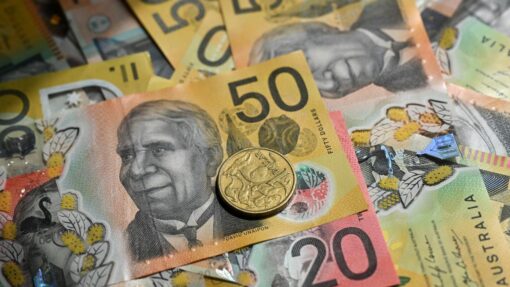Woolworths says food inflation ‘frustratingly elevated’
Derek Rose |
Woolworths says consumers responded strongly to value campaigns as food prices kept rising in the third quarter, albeit at a slower pace than in the three months previous.
The price of the supermarket giant’s food items jumped 5.8 per cent in the 13 weeks to April 2, as it passed on cost increases from suppliers.
Better fruit and vegetable growing conditions and lower livestock prices at least meant food inflation was not as bad as in the December quarter, when prices rose 7.7 per cent.
Chief executive Brad Banducci said there were signs inflation was moderating but in many areas it remained “frustratingly elevated” and the group needed to continue working hard to provide customers with value.
He said Woolworths was focusing on affordable protein, leveraging the company’s own and exclusive brands and its seasonal and member offers.
Woolworths dropped prices on 300 summer grocery staples and over 400 autumn everyday essentials during the quarter, a campaign that proved popular, as was Woolworths’ Brick Farms promotion for a Lego-like set of collectible figurines.
Overall, Woolworths said its third-quarter sales rose eight per cent to $16.4 billion, compared to a year ago.
Australian supermarket sales for the 13 weeks to April 2 were up 7.6 per cent to $12.3 billion, while Big W sales were up 5.7 per cent to $1 billion.
“In general, customer spending is stable,” Mr Banducci said.
“However, value-conscious customers are becoming more thoughtful about their discretionary spend, trading into more affordable options such as our own brands and looking for additional ways to save in-store or through our digital, rewards and e-commerce platforms.”
While out-of-stock products have reduced, they remain above pre-COVID levels and are an area of focus, the company said.
For Big W, increased sales of home, toy and leisure products offset a subdued start to winter clothing sales.
Sales for Woolworths’ digital platform WooliesX rose 12.8 per cent to $1.6 billion, with digital tools such as personalised shopping lists and recipes growing in customer importance.
Online sales made up 9.9 per cent of total Australian food sales, up slightly from 9.3 per cent in the second quarter.
E&P Financial analyst Phillip Kimber said that in three key areas – Australian supermarkets, New Zealand supermarkets and Big W – Woolworths had outperformed E&P’s expectations.
Woolworths’ Australian food sales also slightly outgrew Coles’ sales after lagging them for the last two quarters, Mr Kimber said. But excluding online, Coles was marginally ahead.
At 3.26pm AEST, Woolworths shares were down 1.4 per cent to $38.36.
AAP


